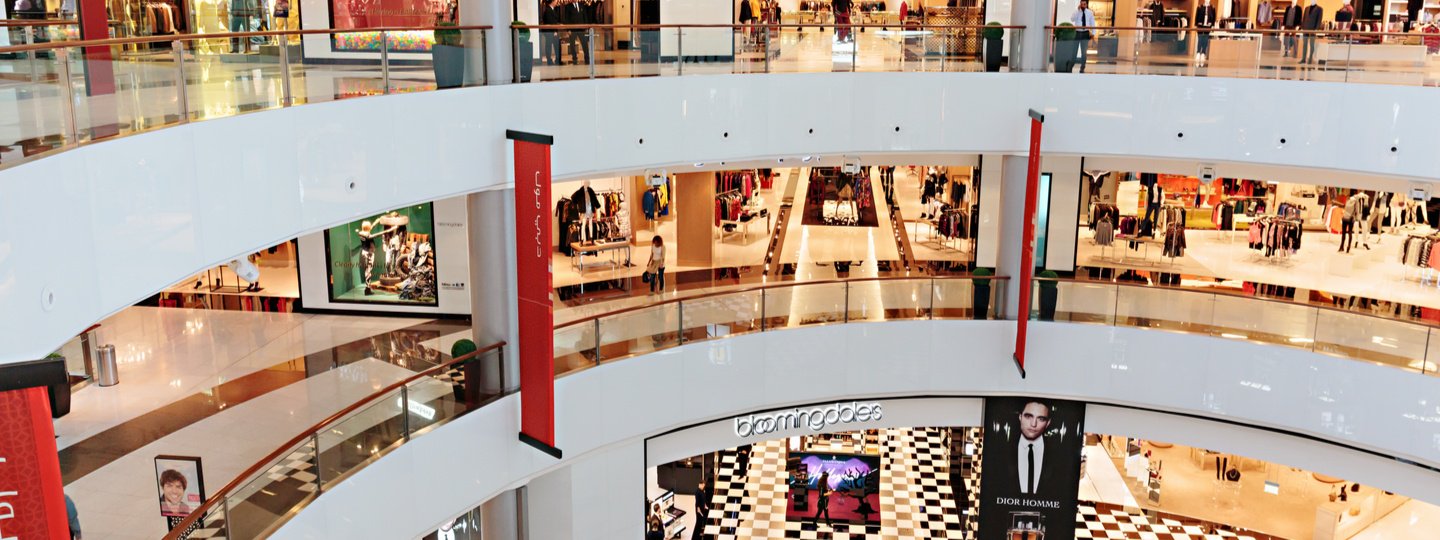7 Standard Retail Spaces in a Transforming Industry
The retail real estate industry has been in the news a lot recently, with the traditional tenant mix evolving and entrenched shopping habits transforming. Amidst this evolving environment, let’s take a step back and get a refresher about the different types of tenant spaces that make up most shopping centers and the tenants that call them home.
1. Anchor Tenants
The anchor(s) of a shopping center, both malls and open-air facilities, are the largest tenants in retail assets, meant to draw the majority of the traffic to the property by feeding shoppers to neighboring smaller stores. In community centers, an anchor could be a grocery store, gym, or drug store.
Square footage varies depending on the type of shopping center. Department stores are around 250,000 square feet, a Walmart Supercenter usually comes in just below 200,000 square feet, grocers average about 30,000 square feet and drugstores are on average 15,000 square feet.
In the case of department stores, like Macy’s and J. C. Penney, which are being talked a lot about nowadays because of major closures, it is common for them to own their own stores. The same goes for Walmart and some of the open-air anchors.
Lease structures can also be different for anchors than other tenants. In the cases when an anchor pays rent, they are often offered certain incentives for the traffic they attract. Much of the time, these tenants’ leasing fees are based on a percentage of their store revenues.
Meanwhile, mall anchors are changing. Since so many department stores are closing, landlords are finding a number of concepts to fill these empty shells. To fight against online shopping, owners are leasing entertainment venues, restaurants, grocery stores and fast-fashion tenants.
2. Junior Anchors
While traditional anchors, whether they are a department store, a Walmart, a drugstore or a supermarket, might be a one-stop shop for several kinds of goods, a junior anchor usually specializes in a specific product. In open-air power centers, these tend to cluster near each other.
Junior anchors one could find in a single property are: PetSmart, Staples, discount clothiers like H&M and TJ Maxx, and others. These tenants usually vary between 15,000 and 30,000 square feet. Additionally, these stores can also be given rent incentives by landlords to draw traffic for smaller surrounding merchants.
Several of these concepts have gone out of business, such as Circuit City and Linens ‘n Things, but landlords have gotten creative and filled many of those vacancies with gyms, specialty grocers, like Trader Joe’s, as well as churches, government offices and other civic uses.
3. Inline Tenants
Inline tenants are what most people would consider the small stores in malls and open-air centers that fill in the space between the larger, previously mentioned, formats. These are the stores that make up for the discounted rents provided to anchors and typically pay more per square foot. They run between 1,500 and 5,000 square feet, depending on the store.
In a grocery-anchored center, these tenants are usually dry cleaners, nail salons, take-out restaurants and other necessity outfits. Community and lifestyle centers might also have apparel or other specialty stores, as well as local businesses. In malls, most of them are apparel outlets, which, like department-store anchors, are having store-closing issues due to online shopping and the vast number of venues to buy similar clothes. Those retailers are now adjusting and trying to give shoppers a reason to enter their doors.
4. End-Caps
In strip shopping centers, end-caps are gold. These are the spaces in smaller outdoor centers that are at either end of the asset. Normally, they get better street visibility than neighboring inline tenants, but retail operators pay for them, up to about $15 per square foot more, according to Saglo Development Corp. End-caps can also have more parking options, a drive-thru and outdoor space, among other pluses. National tenants and restaurants are usually found in these shells.
5. Pad Sites
Pad sites are found in the parking lots of large shopping centers. Typically net-lease properties, they include quick-service food, drug stores and banks, usually with a drive-thru component. Pad sites, which average around 15,000 square feet, can add more GLA and ROI to a shopping center. They also get heavy daytime traffic, and in the case of the restaurants and drug stores, may be open later than several of the center’s inline tenants.
6. Elbows
When an outdoor center is shaped at a right angle, the elbow is at the meeting point of two rows of storefronts. Elbows are usually not the most sought-after spaces due to their poor visibility and a lack of parking, noted the Appraisal Institute. Some of them are on two levels as well, which can make for a complicated retail space, since it can be tough to get consumers to shop upstairs. This can mean cheaper rents for tenants, such as local businesses, that want to break into the market. Additionally, a destination store, such as Apple, could do well in these venues, as they are destinations no matter where they are located in an asset.
7. Stand-Alone Stores
Finally, there are stores that are not actually attached to shopping centers. IKEA, The Home Depot, Walmart, and other large-format destination venues are common. However, most savvy developers take note, and shopping centers with the spaces mentioned above usually pop up in their vicinity.





